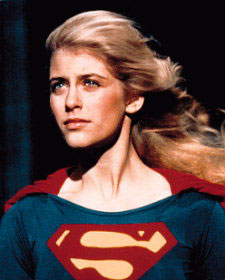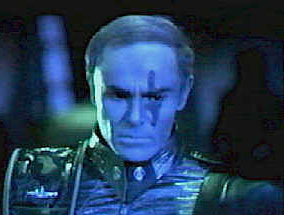Plenty of critics dismiss the Mortal Kombat video game franchise as nothing more or less than gory, juvenile escapism. You know: crap. Plenty more go on to dismiss the very idea of a movie based on a video game. How can you blame them? Look at Street Fighter. Look at Double Dragon. Look at the anime version of Tekken if you can find the damn thing. Should I mention Super Mario Brothers? I could’ve brought that thing home and really given myself some ammunition for a good rant…but no. Instead, I’m gonna pick on this defenseless little excuse for a movie. Brainless monument to corporate synergy though it may be, Mortal Kombat has managed the strangest of hat tricks and become the high water mark in the perpetual kiddy-pool of video game based movies.
Which is amazing when you stop to consider it. Beat ‘um Up games like MK, by their very nature, are short on plot and long on action. A Character (you) is magically whisked from one flashy arena to the next and must hit an opponent until he/she stops moving. Repeat. In this respect, many reviews of this movie are correct: it is slavishly faithful to its source material in terms of both structure and style. Consequently, Mortal Kombat is light years away from being a good movie. Many of the things that made the video game so poplar are either truncated or forgotten in the haze of this (presumably) franchise-launching production. {More}

 Both comic book and movie begin with Argo City, a civic center blown free from the planet Krypton with its gravity and atmosphere completely intact (take that, laws of physics). I’m gonna go out on a limb and assume that the Action Comics team threw in a few pictures with this story. Not so here. Opening with a “bang” is one of the first things to go out the window, despite this film’s nominal connection with the wider Superman franchise. After all, why show us something we can just talk about it? And have Peter O’Toole stand around, waving his magic wand?
Both comic book and movie begin with Argo City, a civic center blown free from the planet Krypton with its gravity and atmosphere completely intact (take that, laws of physics). I’m gonna go out on a limb and assume that the Action Comics team threw in a few pictures with this story. Not so here. Opening with a “bang” is one of the first things to go out the window, despite this film’s nominal connection with the wider Superman franchise. After all, why show us something we can just talk about it? And have Peter O’Toole stand around, waving his magic wand? ou have to wonder what goes on in Roger Corman’s smooth, smooth head.
ou have to wonder what goes on in Roger Corman’s smooth, smooth head.